Chimney cooker hoods are a must-have for keeping your kitchen fresh and smoke-free. They not only look great but also pack a punch when it comes to removing cooking odors and grease. Upgrade your cooking space with one of these stylish and efficient hoods that make the air in your kitchen feel clean and inviting.
Chimney Cooker Hoods
Effortlessly elevate your kitchen with stylish smoke and odor solutions
Product List
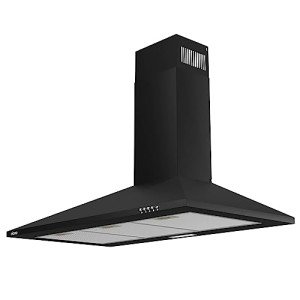
Ciarra 90cm Stainless Hood
Ciarra
Product Review Score
4.74 out of 5 stars
103 reviews$115.21 $109.41
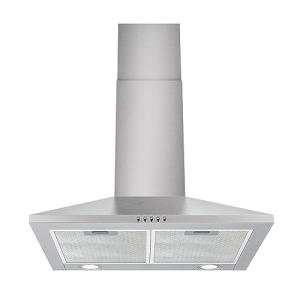
60cm Stainless Steel Hood
Firegas
Product Review Score
4.84 out of 5 stars
125 reviews$92.72 $81.13
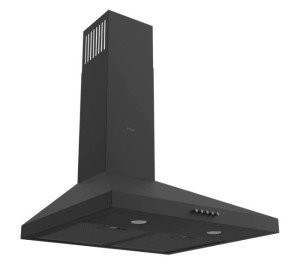
Black Pyramid Chimney Hood
Gianfranco Ferre
Product Review Score
4.82 out of 5 stars
80 reviews$138.10
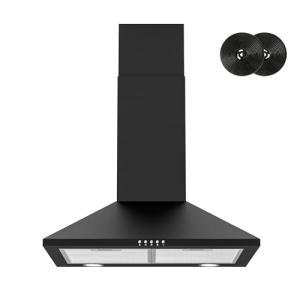
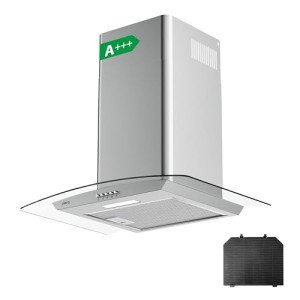
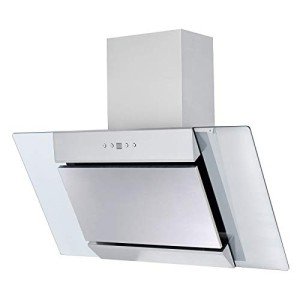
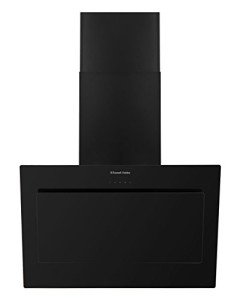
90cm Black Glass Hood
Russell Hobbs
Product Review Score
4.92 out of 5 stars
34 reviews$302.53 $274.91
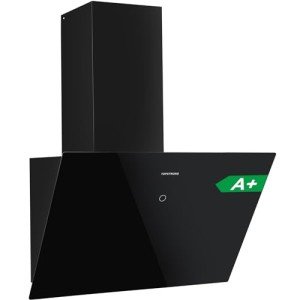

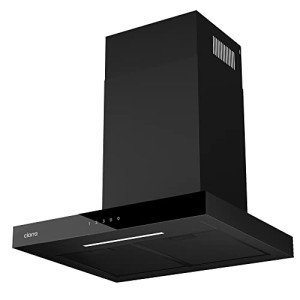
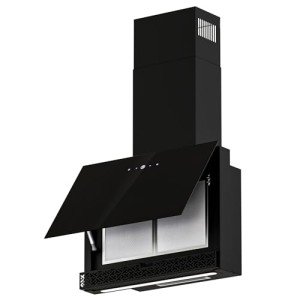
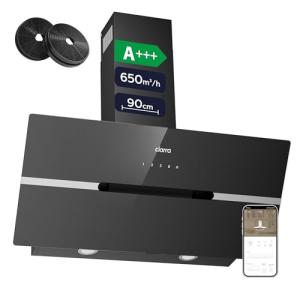
When it comes to designing a functional yet stylish kitchen, one often overlooked but essential appliance is the cooker hood. Among the many styles available, chimney cooker hoods stand out for their classic design, efficiency, and ability to enhance both cooking and air quality. This blog explores everything you need to know about chimney cooker hoods, from their benefits and types to buying considerations, FAQs, and more.
What is a Chimney Cooker Hood?
A chimney cooker hood is a kitchen ventilation appliance designed to remove smoke, grease, cooking odors, and airborne particles produced during cooking. It typically features a chimney-like structure that extends upwards, similar to a traditional fireplace chimney, and is mounted against a wall directly above the hob or stove.
Unlike built-in or canopy hoods, chimney hoods are visible and often become a focal point of the kitchen. They combine functionality with style, making them a popular choice for both traditional and contemporary kitchen designs.
Benefits of Chimney Cooker Hoods
Chimney cooker hoods are not just about aesthetics—they provide practical benefits that significantly improve the cooking experience.
1. Enhanced Air Quality
Cooking generates smoke, steam, grease, and strong odors. A chimney hood extracts these pollutants, leaving the kitchen fresh and clean.
2. Grease Reduction
Most chimney hoods are fitted with filters that trap grease particles, preventing them from sticking to walls, ceilings, and cabinets.
3. Style and Aesthetics
With sleek designs ranging from modern stainless steel to glass finishes, chimney hoods add a sophisticated touch to the kitchen.
4. Effective Ventilation Options
They can work as ducted hoods (venting air outside) or recirculating hoods (filtering and returning clean air back into the kitchen).
5. Better Cooking Experience
By removing excess heat and fumes, they create a more comfortable and enjoyable cooking environment.
Types of Chimney Cooker Hoods
Chimney cooker hoods come in various designs to suit different kitchen layouts and styles.
| Type | Description | Best Suited For |
|---|---|---|
| Wall-Mounted | Installed directly against the wall above the hob. | Standard kitchens where the hob is against a wall. |
| Island Chimney Hoods | Suspended from the ceiling, positioned directly above an island hob. | Open-plan kitchens with central cooking areas. |
| Corner Chimney Hoods | Fitted into the corner of a kitchen, saving space. | Compact kitchens with limited wall space. |
| Angled or Slanted Hoods | Feature a tilted design, offering more headspace. | Kitchens with tall users or modern aesthetics. |
| Glass Canopy Chimney Hoods | Include a glass canopy for a contemporary, stylish look. | Sleek and modern kitchens. |
Key Features to Look for in a Chimney Cooker Hood
When buying a chimney cooker hood, it’s important to understand the features that make a difference.
-
Extraction Rate
- Measured in cubic meters per hour (m³/h). The higher the rate, the more powerful the hood.
- Ideally, the extraction rate should be 10 times the volume of your kitchen.
-
Noise Level
- Look for quieter models (between 40–65 dB) if you prefer a peaceful cooking environment.
-
Size
- The hood should be at least the same width as your hob (common sizes are 60cm, 70cm, and 90cm).
-
Control Options
- Touch controls, remote controls, and smart app integration are available in modern models.
-
Lighting
- LED or halogen lights are often included to illuminate the hob while cooking.
-
Filter Type
- Grease filters (metal or aluminum) trap oil and grease.
- Carbon filters (for recirculating models) absorb odors.
-
Energy Efficiency
- Many models come with energy efficiency ratings from A+ to C.
Comparison Table of Chimney Cooker Hoods (Example Models)
| Feature | Basic Model (60cm) | Mid-Range Model (70cm) | Premium Model (90cm) |
|---|---|---|---|
| Extraction Rate (m³/h) | 350 | 600 | 900 |
| Noise Level (dB) | 65 | 55 | 45 |
| Filter Type | Aluminum grease filter | Grease + carbon filter | Advanced carbon filter |
| Lighting | Halogen | LED | LED with dimmer |
| Controls | Push buttons | Touch control | Remote + App integration |
| Energy Rating | C | B | A+ |
| Price Range | Low | Medium | High |
Installation and Maintenance
Installation Tips
- Ensure the hood is at the correct height: generally 65–75 cm above a gas hob and 55–65 cm above an electric hob.
- Choose ducted extraction if possible for maximum efficiency.
- Professional installation is recommended to ensure correct fitting and safe operation.
Maintenance Checklist
- Clean grease filters every 2–4 weeks.
- Replace carbon filters every 6–12 months (for recirculating hoods).
- Wipe the hood exterior with mild detergent and a soft cloth to maintain the shine.
- Check for duct obstructions regularly in ducted setups.
Pros and Cons of Chimney Cooker Hoods
| Pros | Cons |
|---|---|
| Stylish and visually appealing | Requires space and may not suit compact kitchens |
| Efficient air extraction | Can be noisy if not chosen carefully |
| Wide range of models and price points | Installation cost can be high |
| Improves cooking comfort and hygiene | Regular maintenance required |
Frequently Asked Questions (FAQ)
Q1: What size chimney cooker hood do I need?
A: Ideally, choose a hood at least as wide as your hob. For example, a 60cm hob pairs best with a 60cm or wider hood.
Q2: Are chimney cooker hoods noisy?
A: Noise varies by model. Premium hoods feature quieter motors and sound insulation, often producing less than 50 dB.
Q3: Can I install a chimney hood in a small kitchen?
A: Yes, but wall-mounted or corner chimney hoods are better suited for smaller spaces.
Q4: Which is better: ducted or recirculating chimney hoods?
A: Ducted hoods are more efficient at removing air pollutants, while recirculating hoods are easier to install if ducting isn’t possible.
Q5: How often should I clean the filters?
A: Metal grease filters should be cleaned every 2–4 weeks, while carbon filters should be replaced every 6–12 months, depending on usage.
Q6: Do chimney hoods consume a lot of electricity?
A: Most models are energy-efficient, and modern hoods with LED lighting consume minimal electricity.
Final Thoughts
Chimney cooker hoods are more than just a stylish addition to the kitchen—they play a vital role in maintaining good air quality, keeping grease at bay, and ensuring a comfortable cooking environment. With various types, sizes, and features available, homeowners can find models suited to every budget and design preference.
Whether opting for a minimalist stainless-steel wall hood or a show-stopping island chimney hood, the investment in a good quality chimney cooker hood brings long-term benefits in hygiene, comfort, and aesthetics.